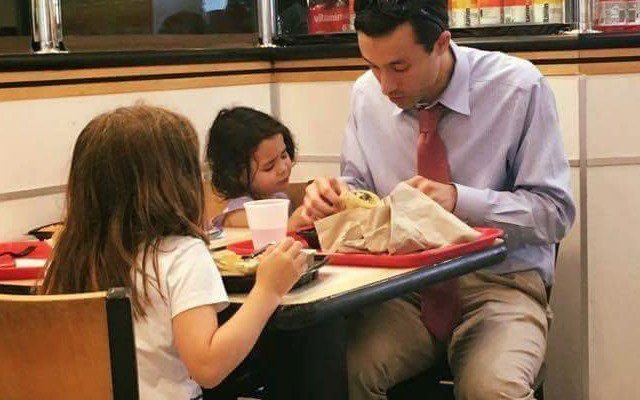In a world often divided by differences, small moments of understanding and education can have a profound impact. Such was the experience of Rabia Ahmad when she overheard a heartfelt conversation between a father and his two young daughters at a restaurant. The girls’ curiosity about the world around them led them to ask questions, including about Rabia’s attire. The way their father responded left a lasting impression on her and served as a reminder of the importance of teaching children about diversity, acceptance, and respect.
A Conversation That Inspired
As Rabia sat enjoying her meal, she couldn’t help but overhear the conversation happening at the table nearby. The two little girls, inquisitive and eager to learn, asked their father about everything they saw—including Rabia’s traditional Muslim attire. Instead of dismissing their curiosity or offering a vague answer, the father took this as an opportunity to educate his daughters in a way that was both simple and profound.
“There are different religions and cultures and languages. We have to learn about them,” he explained. His answer was not just a response to their question but an invitation to embrace the vast diversity of the world. He further shared a personal anecdote about his own experiences traveling abroad and learning to speak Spanish, emphasizing the beauty of stepping outside one’s own culture to understand others.
The Impact of Early Exposure to Diversity
Rabia’s encounter reminded her of a Harvard University study that found children as young as three years old can absorb and internalize racist attitudes if exposed to them, sometimes within just a few days. This underscores the importance of conversations like the one she witnessed. Early childhood is a crucial period for developing beliefs, attitudes, and behaviors. When children are encouraged to explore and understand different cultures, they grow up with a more open-minded and inclusive perspective.
The Role of Parents in Shaping Worldviews
Parents and caregivers play an essential role in shaping how children perceive the world. In many cases, children’s first exposure to diversity comes from observing how their parents react to people who look, speak, or dress differently from them. By fostering curiosity rather than fear, and by educating rather than dismissing, parents can help build a generation that values empathy and understanding.
Small conversations like the one Rabia witnessed can have a ripple effect. When children learn at a young age to see diversity as something to be appreciated rather than feared, they carry that mindset into adulthood. The father in the restaurant didn’t just answer his daughters’ questions—he instilled in them a lifelong lesson in cultural appreciation and respect.
Conclusion
Rabia Ahmad’s experience serves as a powerful reminder that the way we teach children about differences matters. It is in these everyday moments that the foundation for a more inclusive society is built. By encouraging curiosity, fostering open conversations, and leading by example, parents and educators can help create a world where diversity is not just tolerated but celebrated.

